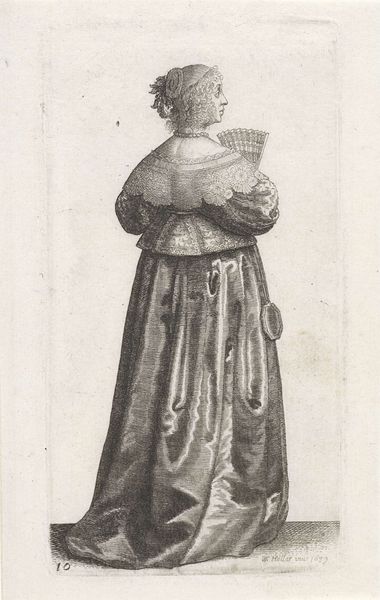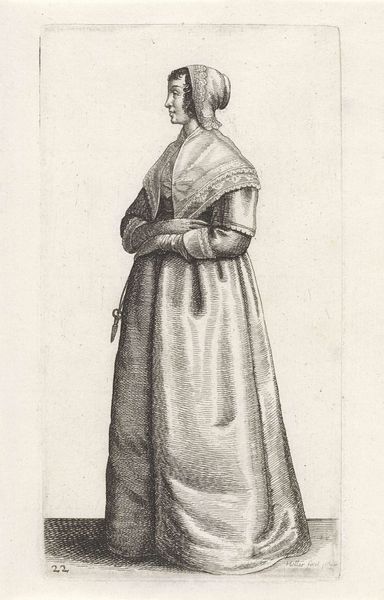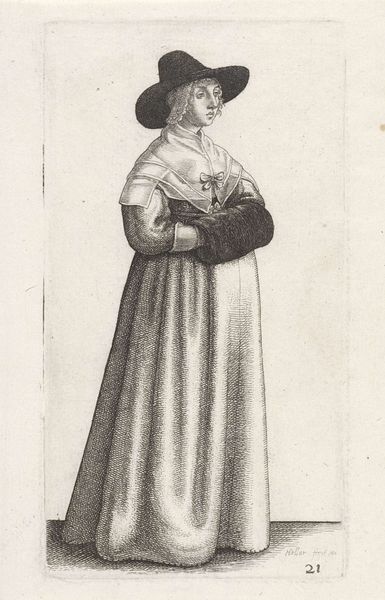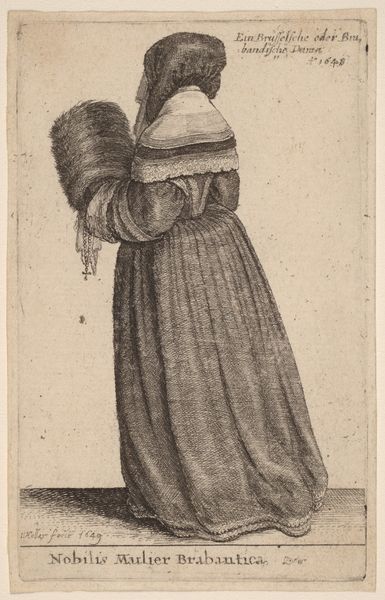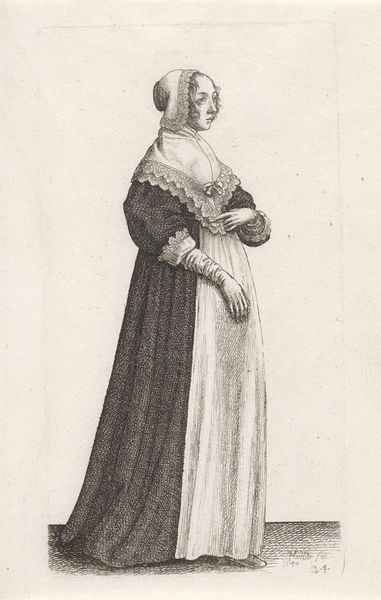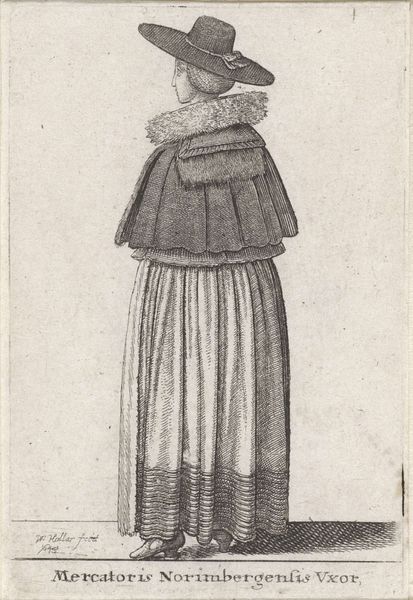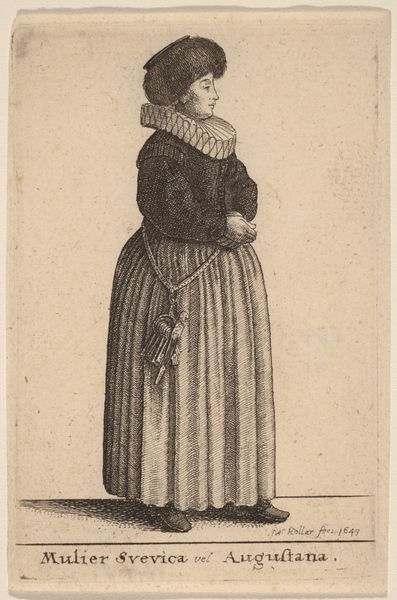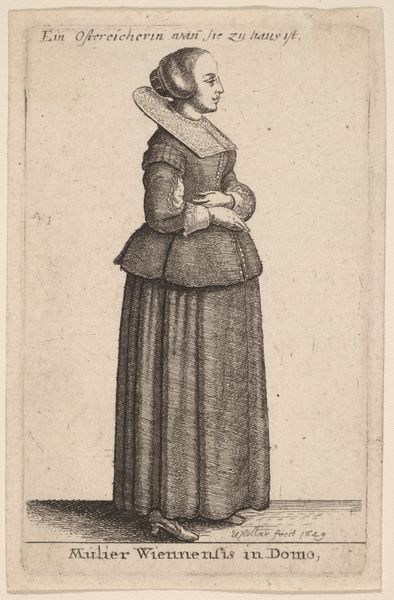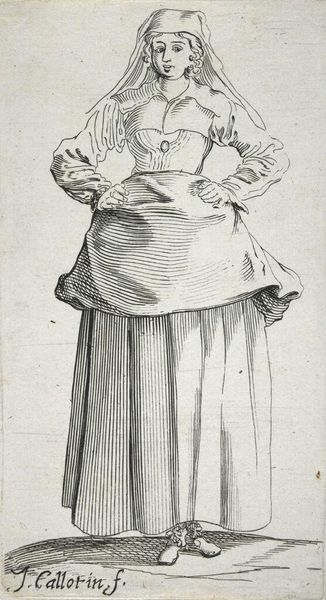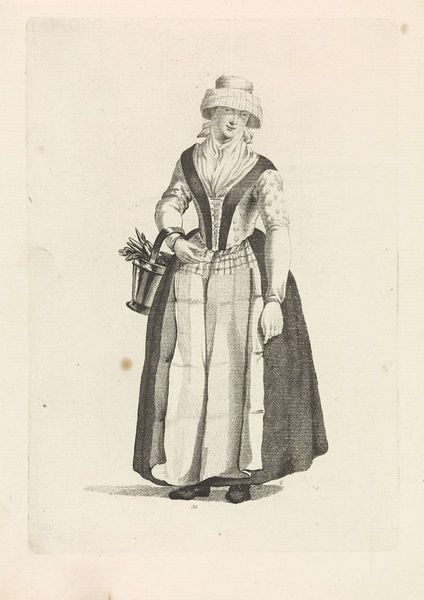
Ornatus Muliebris Anglicanus (The Clothing of English Women) 1640
0:00
0:00
print, engraving
#
portrait
# print
#
pencil drawing
#
genre-painting
#
history-painting
#
academic-art
#
engraving
Dimensions: height 131 mm, width 70 mm
Copyright: Rijks Museum: Open Domain
Curator: Before us is a print from around 1640 by Wenceslaus Hollar, titled "Ornatus Muliebris Anglicanus," or "The Clothing of English Women," currently residing in the Rijksmuseum collection. What strikes you first about this image? Editor: An incredible rigidity! The woman seems almost corseted by her garments, a portrait of societal expectation, I'd say. Look at that colossal ruff! It practically imprisons her head. Curator: Indeed. Hollar's technique using engraving, would have involved meticulous planning and laborious execution on the plate. Consider the class implications, who had access to such luxury materials and crafted garments? Editor: Absolutely, this elaborate ruff speaks volumes. The ruff visually frames her face but simultaneously distances her. This could represent her social status and the need to maintain decorum and distance. We see symbols of wealth, of course, the fur muff for warmth and status and also that very high-fashion hat, the focus is clearly her image in society and what her clothes tell the viewer about her place. Curator: We can certainly delve deeper into how Hollar uses line to delineate textures and shapes to reflect class structures, while the social symbolism interests you. Consider the act of collecting these fashions, not just for documentation, but also as items to study. Editor: True. The image evokes a strong sense of stoicism and self-possession. She embodies the stiff upper lip of English womanhood, so to speak. What a symbol! Curator: It reflects a period deeply impacted by the economics of fabric, global trade, and the status that expensive clothing materials afforded its wearer, we cannot overlook the labor conditions required to make the fine details present in her adornment. Editor: So while I analyze how the English woman of that era communicates societal importance through very careful clothing symbolism, you, as a materialist, can also explore this further using historical economics of fashion from this same era to draw relevant conclusions. Curator: Precisely. There’s more to this print than just an aesthetic representation. Editor: It has been insightful to explore the interplay of material, meaning, and symbolic visual language in this singular print. Curator: Indeed, a single piece holds myriad potential entry points into cultural study, history, and interpretation.
Comments
rijksmuseum about 2 years ago
⋮
The diversity of women’s apparel in England is illustrated in this extensive costume series. Hollar represented women from all ranks of society, from the humble countrywoman 1 to the elegant noblewoman 2. The more fashionable costumes are based on eyewitness observation of the ladies at the court of the Earl of Arundel, Hollar’s primary patron. They are therefore among the more reliable visual sources for costume historians.
Join the conversation
Join millions of artists and users on Artera today and experience the ultimate creative platform.
